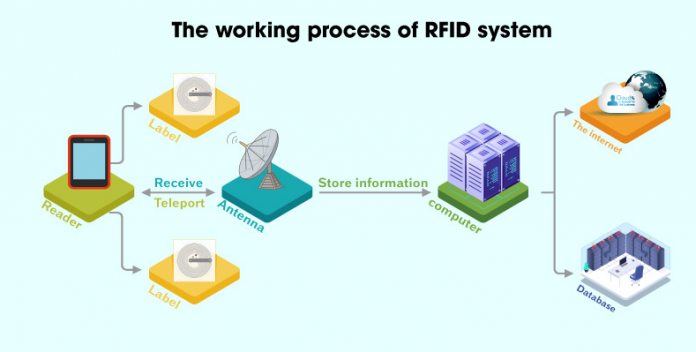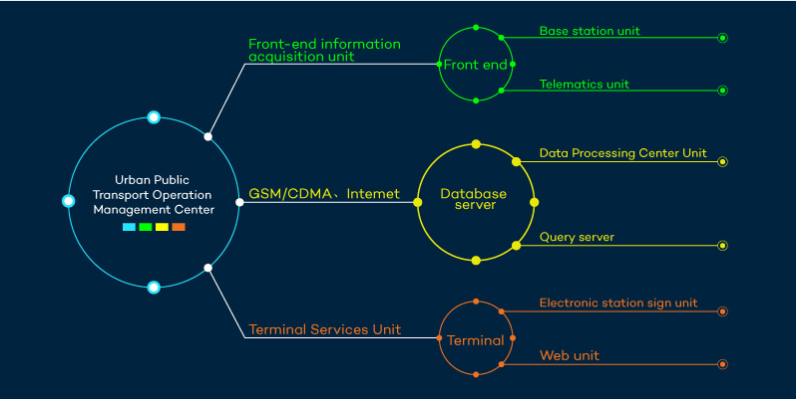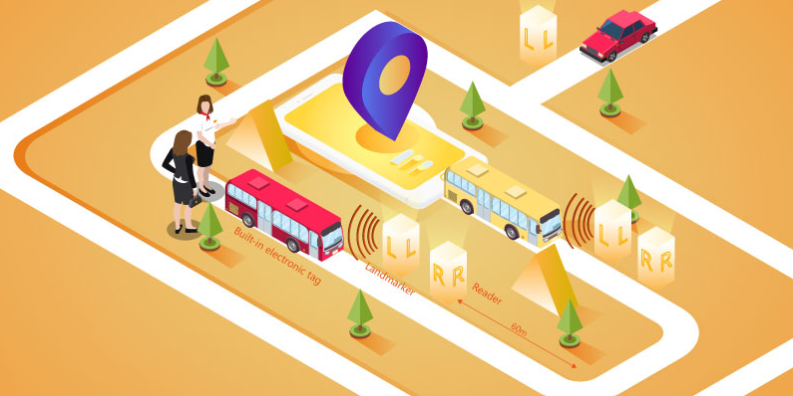Composition of RFID System in Public Transportation
RFID (Radiofrequenz-Identifikation) system is an automatic identification technology that uses induction,radio wave or microwave energy for non-contact two-way communication to identify and exchange data. It can automatically identify target objects and obtain relevant data through radio frequency signals.
The most basic RFID system usually consists of tags, readers, data transmission and processing systems. The tag is made up of a coupling element and a chip. Reader and Tag can exchange information according to the agreed communication protocol.

When the electronic tag enters the magnetic field area, the receiving reader sends out a signal, and then the tag uses the energy obtained by the induced current to send product information stored in the chip (Passive Tag), or actively sends a signal of a certain frequency (Active Tag); the reader reads the information and decodes it, and send it to the central information for related processing, but it needs some other software and hardware in the practical applications.
Compared with bar code, RFID-Technologie has so many advantages, such as waterproof, antimagnetic, high-temperature resistance, long service life, large reading distance, data on the label can be encrypted, larger storage capacity, storage information changes freely.
Composition of RFID System in Public Transportation
RFID intelligent urban public transportation system can be divided into front-end information acquisition unit, data processing center unit, terminal service unit, urban public transportation operation management center and other modules.

The front-end information acquisition unit is used to realize the date communication between the on-board RFID-Tag and the roadside reader; the terminal service unit is used to implement the information release and electronic charging of bus operation status; the data processing center unit is used for data processing of the collected information; the urban public transportation operation management center conducts vehicle dispatching according to the collected bus operation data.
Application of RFID System in Public Transportation
RFID technology can increase productivity and reliability with accurate scanning. It plays an important role in public transport management.
You can now use an RFID card as your ticket which is read through a verifying process and the authentication checking system. It is just a small example of the application of RFID in public transport management, it can do more. Paper-based transport systems can face different malfunctions in the system, but RFID is an automated system that performs highly accurate tasks in a cost-effective manner.
RFID system can make urban public transportation more digital and intelligent, and improve the efficiency of public transportation operation and management and the level of social services. The specific application includes the following aspects:
1、Bus Terminal Management
Each bus will have an RFID tag with a unique global identification number and is registered in the system. When the bus into the station, the reader installed at the entrance will automatically read the tag on the bus and transmit the information to the background computer. The computer in the background will record the admission time of the vehicle and the information related to the vehicle and determine where the vehicle should be parked and feedback this information to the LED display screen at the entrance.
Through the LED display, the driver can know which parking space to park in and some additional information, such as the next departure time. When the bus exits, based on the same working principle, the background system will record the exit time and other information, and record into the background database.
2、Bus Station Management
When the label signal is received by the remote reader installed at the bus station, the reader sends the label signal to the designated data processing terminal through the network cable (or GPRS) and determines that the bus is coming into the station.
When the reader cannot read the signal of the label, the bus is judged to be leaving the station;
Result of judgment can be connected with the public address system of the bus to control the voice broadcast, and then through the open and close signals of the bus, accurately determine the status of the bus has stopped and will leave the station.
3、Bus Route Management
When the bus passes the overpass with a reader installed, the reader reads the label information and sends it to the dispatching center for processing and judge whether the bus deviates from the route and traffic conditions, effectively realizing remote monitoring and dispatching.
Advantages of RFID System in Public Transportation
The advantages of RFID application in urban traffic control system are as follows:
Automatic recognition without stopping for a long distance, real-time fixed-point acquisition of the time when the bus enters and leaves the station and passes through the platform, and determine the position of the bus;
The LED board of the dispatching center and the platform board can display the dynamic information of the online operation of the bus, including the position of the bus, crowded situation, the empty bus, and the normal information prompt, so as to facilitate flexible vehicle scheduling and convenient passenger waiting;
It is convenient to check whether the bus runs according to the prescribed route, and improve the punctuality of arriving at the platform. It is convenient for the automatic management of vehicle scheduling, flow statistics, vehicle attendance, task assessment, road bill report generation, as well as the maintenance period prompt, vehicle maintenance records, inspection records and other aspects.
Which Countries are Already Using it?
The United States is an early country to apply RFID technology to urban transportation. Many large cities have adopted RFID technology in the field of public transportation and traffic management, which has produced good use effect and economic benefit. For example, in the urban public transportation system, the RFID reader unit installed within the range of roads can be used by multiple bus lines at the same time. After the formation of a large-scale RFID-based intelligent urban public transportation system, it has a scale effect, and the hardware price is quite cheap.
In addition to the United States, South Korea is installing an RFID system for e-passes on 600 buses in Seoul, and plans to extend the system to rail systems and public transportation in other cities.
In Hong Kong, an automatic identification system has been set up to install electronic tags on about 80,000 vehicles. When vehicles equipped with electronic tags pass through special tunnels, parking lots or highway intersections equipped with radio frequency scanners, they do not need to park to pay, which greatly improves driving speed and efficiency.
At present, the automatic positioning of public transportation vehicles generally uses the GPS (global positioning system). However, compared with RFID system, although GPS can accurately realize the real-time positioning of operating public vehicles, it is expensive to install and run.
With the development and maturity of RFID technology, it will become a development trend to introduce RFID technology into UTCS (urban traffic control system). More and more countries are using RFID systems in urban public transportation.
In Verbindung stehende Artikel
- Erfahren Sie alles über verschiedene Arten von RFID-Tags
- RFID-Zugriffskontrollarmbänder für Veranstaltungen
- Verwendung von RFID für die Bestandsverwaltung
- Einsatzmöglichkeiten von RFID-Tags in der Schule, die Sie kennen müssen
- RFID-Technologie zur Viehverfolgung
- Die Vorteile und Hindernisse der RFID-Technologie in Krankenhäusern


